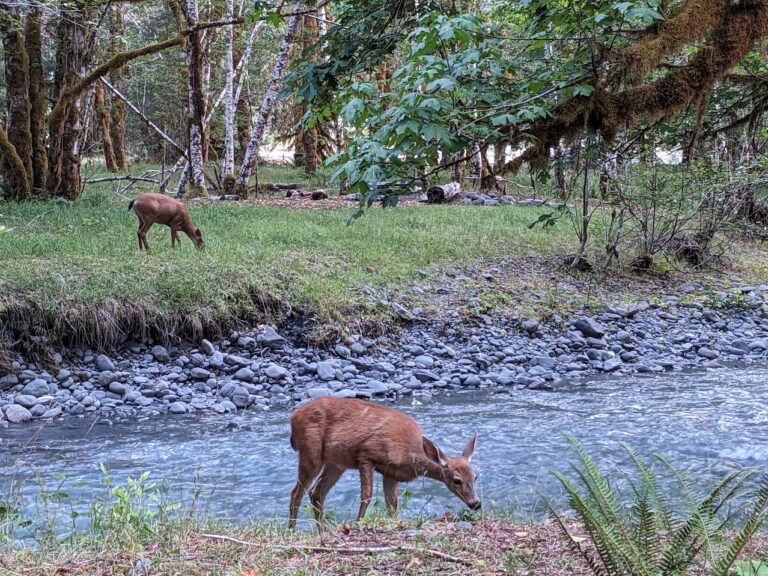Insights from the Trail – Part 2
Continued from Part 1
3. Be consistent. Slow and steady wins the race.
It’s all about the tortoise and the hare, especially with noteworthy endeavors. When reaching a fatigued state, it is not only difficult but also dangerous to move too quickly. We were quite content with our pace, despite being passed by some hikers who were clearly well-trained. Slow as we may have been, we passed the hare on our last day (see photo).
tortoise and the hare, especially with noteworthy endeavors. When reaching a fatigued state, it is not only difficult but also dangerous to move too quickly. We were quite content with our pace, despite being passed by some hikers who were clearly well-trained. Slow as we may have been, we passed the hare on our last day (see photo).
Our brains also regulate our pace in order to ensure survival – (see #7).
Not only does this tenet apply to the actual step-by-step hiking, but also this hike reminded me of the importance of keeping up with a consistent habit of doing long-distance hikes throughout the year. Though I did some conditioning in anticipation of this hike, it still felt too much like a weekend-warrior adventure for which I was not adequately prepared from a physical standpoint. Keep moving . . . all of the time.
4. Nature is unforgiving and doesn’t care about your emotions.
There’s an important lesson in there. 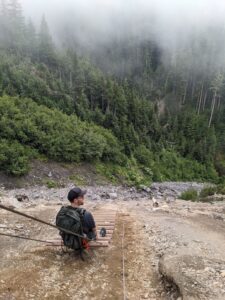 Nature is as it is, forged over millenia by terrific geologic forces and simultaneously beautiful and fierce. No matter how difficult the trail, there’s nothing one can do to change the vastness of the rugged great outdoors.
Nature is as it is, forged over millenia by terrific geologic forces and simultaneously beautiful and fierce. No matter how difficult the trail, there’s nothing one can do to change the vastness of the rugged great outdoors.
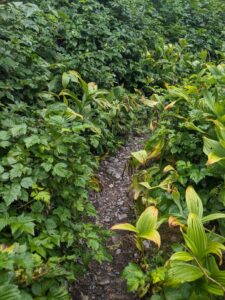
As we were walking along the narrow trail that was at times almost fully obstructed by surrounding brush, it’s daunting to think of how enormous the surrounding wilderness really is. Imagine how much of the Olympic National Park’s nearly 1 million acres of wilderness is unreachable by trail.
5. There is a simple elegance to living by the Sun.
Quite simply, we are nothing without the Sun. The Sun is the major source of energy on Earth, including all nutritional energy whether acquired via plants or animals. In primitive settings, outside of the comforts of modern-day living, the day-night cycle defines one’s activities. And so it was on the trail – we rose with the sun and settled with the sun. Of course, an exhausting day of hiking also makes it easy to fall asleep earlier than usual.
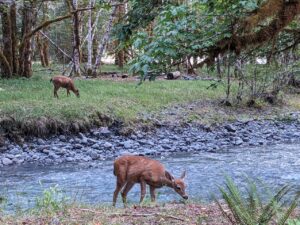
Immersion in the outdoors also allows an escape from electronics and media – no audio, no screen time. We fell asleep to the constant sounds of the rushing river just a few feet from our campsite, only to spend our days hiking in the quietest spot in the contiguous 48 states – one of only a handful of places where you can experience 15 minutes of daytime silence, untouched by noise pollution.
6. Nature is rejuvenating. 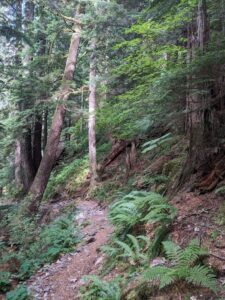
Being out in nature is relaxing – simply being in nature allows one to find comfort through all of our senses. Unfortunately, the average American spends 87% of their time indoors and 6% in an enclosed vehicle, according to an Environmental Protection Agency study.
Japanese culture promotes a concept known as “Forest Bathing” (shinrin-yoku) – meditative time spent in the outdoors. There are many documented physiologic benefits to doing so, whether or not there is a meditative intent. Even a small amount of time spent outside can have a positive impact on your health.
On a more irreverent note, I highly recommend Nature Rx . . . ask your doctor if Nature is for you.
7. We are capable of far more than our brains think.
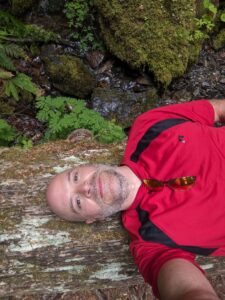
While struggling to keep moving on the trail, I had to suppress a near-constant voice in my head to “Stop”. I was physically exhausted, I was thirsty, and my legs and feet were incredibly sore. When failure is not an option, though, the body is capable of far more than we realize.
The Central Governor theory described by Dr. Tim Noakes explains how the brain essentially calculates what level of activity is safe for you to perform under the prevailing conditions. Symptoms of discomfort “are generated by the brain and they have nothing to do with the state of the body at that time. They only are related directly to how close you are to the finish.” (ref.) Thus, the brain is the primary factor regulating your physical output in order to safely get you to the finish line.
Of course, when hiking along a river, there is generally only one way to return to one’s starting point. Knowing that the campsite or your ride home is at the end of the line is a powerful motivator to push through any negative thoughts. Once your brain realizes that the ‘finish line’ is close enough that you won’t die trying to get there, it allows your body to step up the pace.

